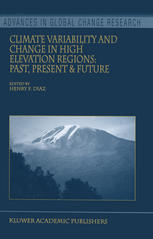

Most ebook files are in PDF format, so you can easily read them using various software such as Foxit Reader or directly on the Google Chrome browser.
Some ebook files are released by publishers in other formats such as .awz, .mobi, .epub, .fb2, etc. You may need to install specific software to read these formats on mobile/PC, such as Calibre.
Please read the tutorial at this link: https://ebookbell.com/faq
We offer FREE conversion to the popular formats you request; however, this may take some time. Therefore, right after payment, please email us, and we will try to provide the service as quickly as possible.
For some exceptional file formats or broken links (if any), please refrain from opening any disputes. Instead, email us first, and we will try to assist within a maximum of 6 hours.
EbookBell Team

4.0
66 reviewsGlaciers in the Andes are particularly important natural archives of present and past climatic and environmental changes, in significant part because of the N-S trend of this topographic barrier and its influence on the atmospheric circulation of the southern hemisphere. Strong gradients in the seasonality and amount of precipitation exist between the equator and 30° S. Large differences in amount east and west of the Andean divide also occur, as well as a change from tropical summer precipitation (additionally modified by the seasonal shift of the circulation belts) to winter precipitation in the west wind belt (e. g. , Yuille, 1999; Garraud and Aceituno, 2001). The so-called 'dry axis' lies between the tropical and extra tropical precipitation regimes (Figure 1). The high mountain desert within this axis responds most sensitively to the smallest changes in effective moisture. An important hydro-meteorological feature on a seasonal to inter-annual time-scale is the occurrence of EN SO events, which strongly control the mass balance of glaciers in this area (e. g. , Wagnon et ai. , 2001; Francou et ai. , in press). The precipitation pattern is an important factor for the interpretation of climatic and environmental records extracted from ice cores, because much of this information is related to conditions at the actual time of precipitation, and this is especially so for stable isotope records. Several ice cores have recently been drilled to bedrock in this area. From Huascanin (Thompson et ai. , 1995), Sajama (Thompson et ai.